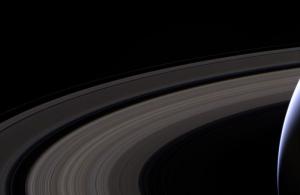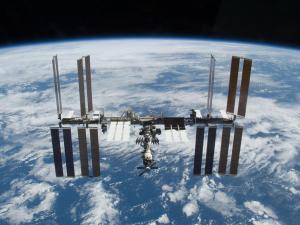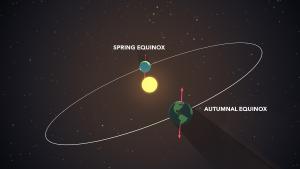
Stargazing Nights
- Where:
- Frosty Drew Observatory
- When:
- Friday September 14, 2018 at 7:30 p.m
- Cost:
- $5 Suggested Donation per person 5 years and older
Tonight is Stargazing Night at Frosty Drew Observatory, and forecasts are all over the place. Some sources are calling for mostly clear to clear skies, while others are calling for mostly cloudy to fully overcast. From what we can tell, this variability exists around the dew points, which are certainly in the fog forming range. Though variability favors us at Frosty Drew Observatory, fog usually moves in earlier than expected, and fog is expected overnight tonight in the morning hours. It’s important to note that our most reliable forecasting source is calling for clear skies tonight. We also have the 30% waxing crescent Moon with us tonight until 10:06 p.m., which will show off fabulous views of Earthshine (when the nighttime area of the Moon is dimly lit and visible from sunlight reflecting off Earth). In the sky the planet parade continues with Jupiter, Saturn, and Mars. This all makes for a highly anticipated hoping for the clear(er) sky side of that variability.
We will open the Observatory and Sky Theatre at 7:30 p.m. tonight. In the Observatory telescopes will start off on standby as we evaluate sky conditions on site. If acceptable, we will start off with a brief late season view of Jupiter and its four Galilean Moons. Saturn’s rings and moons, as well as Mars, where the dust is settling, will be the primary focus of the night in the big telescope. If skies are clear enough, the Milky Way will be visible overhead and we will direct the big telescope towards nebulae and star clusters along the galactic plane. Observatory courtyard telescopes will showcase the 30% crescent Moon, binary stars, and if skies are clear enough, the Andromeda Galaxy as well as numerous nebulae and star clusters. In the Sky Theatre we will feature our popular showcase of celestial objects photographed at Frosty Drew Observatory. We will close up at 11:30 p.m. or when clouds chase us out, whichever comes first, though no earlier than 10:00 p.m. Check in on our Twitter (@FrostyDrewOBSY) or the right column of our website for updates on what is happening at the Observatory, including a “Closing up” post when we decide to wrap up the night.
Overall, tonight has the potential to be a fabulous night. A stunningly thin crescent Moon, numerous bright planets, and super dark skies would have normally made this the night to be out. Though the potential for cloudy conditions and the inevitable inundation of fog will hammer away at that awesomeness. Variability does favor us at Frosty Drew Observatory and we could see that amazing night unfold. Add in that high tide happens around 12:50 a.m. overnight tonight and the high surf from hurricane Florence will be hammering the coast about 1 mile south of Frosty Drew Observatory. This could make for eerie and ominous sounds of the wave-battered coast thundering though Ninigret Park (home to Frosty Drew Observatory). Regardless, tonight will be a worthy night for visitors in the local RI and CT area, with those making the long drive likely sitting this one out.
------------------------
Weekly Happenings
Scott MacNeill
Tomorrow morning, Saturday, September 15, 2018 at 7:55 a.m. will mark exactly one year since the fabulous NASA Cassini spacecraft lost contact with Earth, effectively ending the amazing, 13-year-long mission at Saturn. Launching on October 15, 1997, the Cassini-Huygens mission forever changed our view of Saturn, propelling the ringed planet into the limelight. Week after week, a constant storm of stunning images kept coming in, showcasing Saturn, its rings, and the fabulously active and dynamic moons of the Saturn system. The mission was designed to run for three years at Saturn, but after 13 years the mission kept pushing on, eventually to the point of depleting the spacecraft’s fuel reserves. There was a concern that if the spacecraft remained in the Saturn system without fuel, an impact could eventually occur with one of Saturn’s potentially life-supporting moons, which could contaminate that moon with microbes on board the spacecraft from Earth. The result of this concern was for Cassini to enter Saturn’s atmosphere and burn up, while sending back any data that the spacecraft could collect during this final encounter. Take a moment and check out the final images we received from the Cassini mission. While there, check out some of the unspeakably beautiful images of Saturn’s system. Way to go Cassini!
This coming Thursday, September 20, 2018 will bring the International Space Station (ISS) back to our evening skies in the U.S., with passes continuing nightly until October 14, 2018. Orbiting Earth 51° inclined to the equator, places the ISS over the U.S. numerous times per day, though not always at night. Additionally, to see the ISS, the station needs to be in direct sunlight while the observer (on the ground) is in night. The only light we see when the ISS passes over is reflected sunlight, and at an average altitude of 230 miles any light emit by the station is too dim to reach our eyes. The station orbits Earth at 17,200 mph, resulting in one full orbit every 92 minutes. Catching sight of the ISS is easy, it’s so bright! Visit our website for a list of daily satellite passes applicable to Southern New England and largely the Northeast. For pass times specific to your location, visit NASAs Spot the Station. These passes also present a fabulous opportunity to capture a photo of the station, either with a telescope or wide field. If you happen to capture an image, post it on our Facebook and we’ll share it on our time line. Step out later this week and spot humanity’s only continuously inhabited off-world residence.
On Saturday, September 22, 2018 at 9:54 p.m. EDT, Earth will reach the point in its orbit around the Sun where Earth’s equator will intersect with the ecliptic (the path the Sun takes across the sky). This is the Autumnal Equinox and marks the first day of autumn in the Northern Hemisphere. At this time, Earth with be neither tilted towards nor away from the Sun. Those who live along Earth’s equator will see the Sun rise due East, pass directly overhead (zenith) at noon, and set due West. This will allow for nearly equal duration of day and night times worldwide. Since we are neither tilted towards nor away from the Sun, sunrise and sunset times will be the same for corresponding locations in the Northern and Southern hemispheres. The Autumnal Equinox also signals a shift in day and night duration to the part of the year with longer nights in the Northern Hemisphere. All that aside, next Saturday brings beautiful autumn colors, lunar halos, pumpkin pie, Oktoberfest, spooky décor, maniacal leaf-peeping, and the inevitable dive into shorter days with cooler temps.
Save the Date: Tomorrow night, Saturday, September 15, 2018 from 7:30 p.m. - 9:00 p.m. Brown University’s Robert Horton and Scott MacNeill will setup telescopes at Ballard Park in Newport, Rhode Island, showcasing the planets, crescent Moon, and more. Forecasts at this time are looking quite swell and a beautiful night of stargazing surrounded by the rock walls of Ballard Park will give you a great reason for a night out in Newport. Check it out
-Scott



